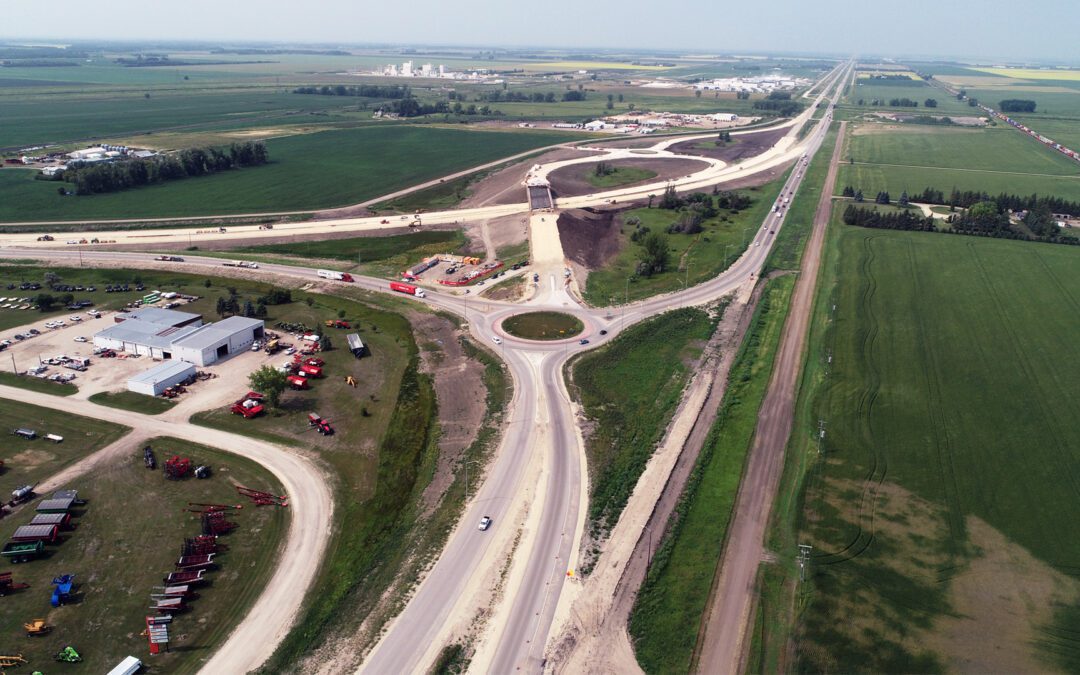Construction is always a dynamic process, but when the environment at the site is itself in motion, this takes on a new meaning. This is what occurs when building in, over or beside water, and demands a particular set of skills. While specialized construction techniques and equipment each play a role, Kimberly Haddow, a Senior Project Manager with Graham, says what really matters is customized risk management which, in turn, depends on meticulous planning bolstered by experience.
The plan plus the ability to overcome the truly unpredictable, says Haddow, drive success in water-related construction: bridges and culverts, intakes and outflows, dams and irrigation works, and streambank stabilization. “You need to understand the risks to mitigate the risks,” says Haddow. “What we do is always around planning the work for the particular project characteristics, for the client and for the regulatory needs. You need to know your capabilities and limitations, and you need to match those to the situation.” While all top-tier construction companies can execute water-related projects, Haddow believes what sets Graham apart when it comes to bridge work “is our level of pre-planning and our realistic risk assessments.” Haddow’s 11 years at Graham have made her intimately familiar with these areas.
In addition to standard construction planning, planning for bridge work requires three key areas: permitting and regulatory aspects, risks posed by Mother Nature, and flexibility and creativity because of how the latter two can impact the execution plan.
The first and third aspects are illustrated by the Crowchild Trail Short-Term Improvement project – a dramatic makeover of a 60-year-old bridge over Calgary’s Bow River. It involved “building a wider new bridge and attaching it to the old one”, but without closing the critical thoroughfare or performing any in-stream work. These constraints, known at the outset of the project, enabled Graham to effectively plan and perform the execution through alternate means. All pier work, explains Haddow, was executed from suspended platforms.
Even when in-stream work is permitted, that may not be the right execution plan when considering the broader project requirements. On Edmonton’s Groat Bridge Rehabilitation, Graham was permitted to work in-stream. However, when assessing the tight project schedule and the additional complexities of working in-stream (such as seasonality, fluctuating river depth, and building and relocating berms, etc.), the team rehabilitated the bridge using an overhead gantry system instead. This ensured the project was completed on time. Developing such alternative execution plans only stem from vast experience of building over water.
Planning and experience aside, Mother Nature can still send curve balls that overwhelm even the best plans. Work was well underway on Calgary’s St. Patrick Island Pedestrian Bridge in spring 2013. Then, the Bow River flooded to record heights, picking up construction trailers, carrying them hundreds of metres downstream and wiping out sections of temporary shoring that were supporting the bridge deck. Such tough experiences add realism to future planning and illustrate that not all risks can be avoided. “You need to be prepared to handle adverse events, with some options figured out,” says Haddow. Despite the 2013 flooding, Graham completed the bridge the following year.
Specialized equipment and procedures do enter the picture at times, like on the Gaetz Avenue bridge rehabilitation over the Red Deer River in Central Alberta. In-stream work around the main pier was allowed, but not building the usual continuous earthen berm from the bank, deemed to restrict too much of the river to navigation. Graham opted for an Aqua Barrier – inflatable water-filled bags. To place these around the pier, Graham constructed a temporary causeway and placed the bags with an excavator – an elegant solution.
Graham is involved in water-related projects throughout North America. The common elements, sums up Haddow, “Are drawing on a depth of experience to assess the true conditions, understand all of the restrictions, get all of the inputs to manage the risks and costs, recognize the parameters of the contract, execute the work and be prepared to manage unforeseen events.”


